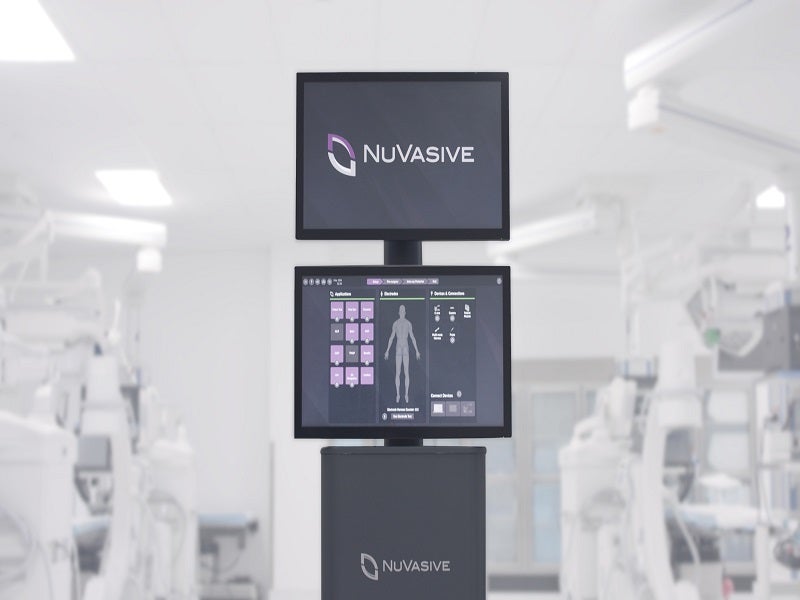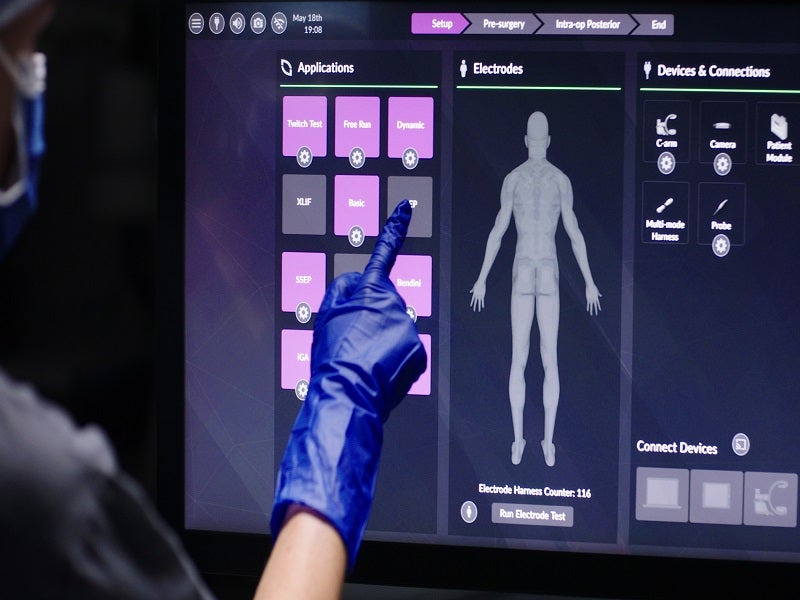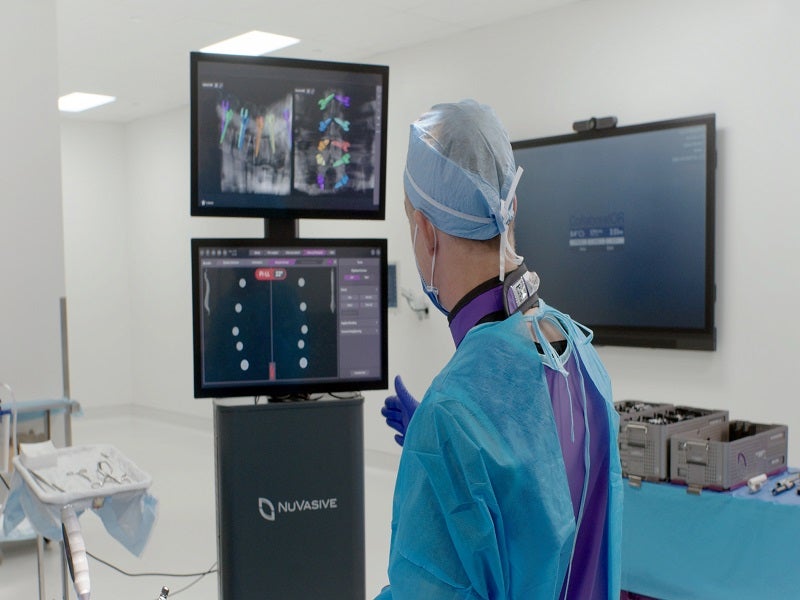The Pulse™ system is the first integrated technology platform designed to improve the safety, efficiency, and reproducibility of all types of spine surgical procedures.
Developed by NuVasive, a medical device company based in the US, the Pulse platform can be utilised in 100% of spine operations. It is a disruptive technology capable of changing the future of spine care for patients.
The Pulse platform received 510(k) clearance from the US Food and Drug Administration (FDA) in July 2021 after obtaining the European CE Mark approval in June 2021.
Pulse platform design and features
The Pulse spinal surgical automation platform integrates multiple technologies into a single platform. Its extensible architecture will be capable of integrating future applications such as robotics.
The platform features NuVasive’s Lessray® technology to enhance imaging and improve operating room (OR) efficiency by streamlining imaging workflow. It also reduces radiation exposure significantly for everyone in the room.
A procedurally integrated navigation system in the Pulse facilitates improvement in screw placement accuracy while minimising radiation exposure.
The neuromonitoring feature in the platform offers proprietary automatic nerve detection with the standard setup, and clinically verified alerts to help minimise variability and speed up neural data interpretation.
NuVasive’s Integrated Global Alignment (iGA®) technology enables the system to assist surgeons in correcting or restoring spinal alignment by providing surgical planning and intraoperative assessment tools. It also allows surgeons to follow up after operations to evaluate the procedure’s outcomes.
Bendini® is a patient-specific spinal rod bending technology utilised in the Pulse system to create customised rods that are bent to implant sites. It accelerates manual rod manipulation by using computer-assisted bend directions.
The platform integrates a variety of imaging systems but is especially well-suited to Siemens Healthineers’ Cios Spin® 3D mobile C-arm.
The wireless connectivity enables seamless connection and management of the Pulse platform by all members of the surgical team in the OR, from the surgeon to the C-arm technician to support staff.
Siemens Healthineers’ Cios Spin® 3D mobile C-arm details
Cios Spin enables 2D and 3D intraoperative imaging for precise quality control and helps to control operational costs and risks. It features CMOS flat detector technology with 30-second scan speed and simultaneous three projection display.
The metal artefact reduction (MAR) tool minimises artefacts such as blind spots and streaks in 3D images. The NaviLink 3D digital interface allows seamless integration with navigation by automatically transferring 3D datasets to certified navigation systems to be used together for image guidance and navigation in surgery.
Benefits of the Pulse system
The platform enables surgeons to easily access numerous technologies from a small footprint and adopt less invasive and more sophisticated surgical techniques while addressing some of the most prevalent surgical challenges.
The benefits of less invasive surgery are supported by extensive clinical data, which include reduced operating room (OR) time by up to 60 minutes, shorter time under anaesthesia, minimal blood loss, and lower intraoperative risks.
It also contributes to a shorter length of stay in the hospital and savings of approximately $5,000 per patient in hospital expenditures.
Pulse is one of the most versatile tools in the spine OR, combining multiple technologies in a single platform allowing surgeons to make more informed clinical decisions for their patients.
The Pulse system can assist in the improvement of clinical, financial, and operational outcomes. It supports all spine surgery types, ranging from open to less invasive.









